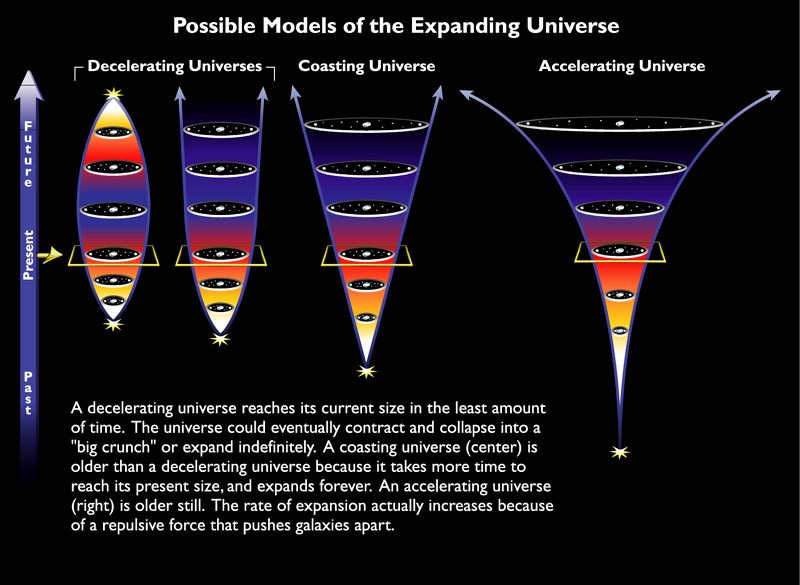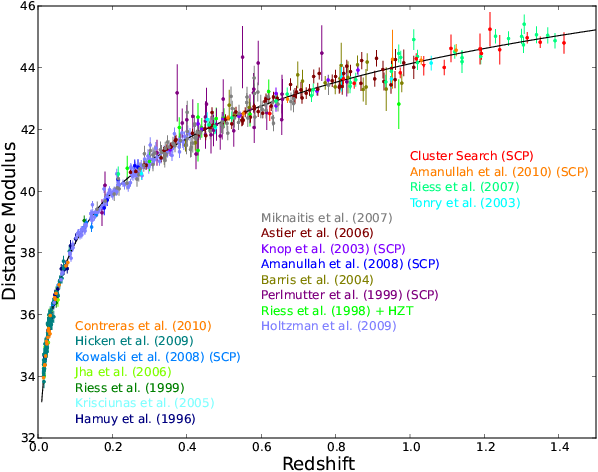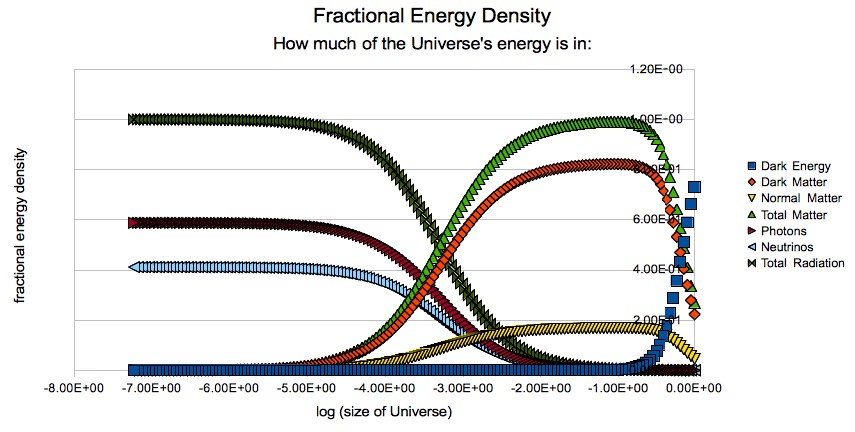Ask Ethan # 52: how long has the expansion of the universe begun to accelerate?
- Transfer
If we were born a couple of billion years earlier, we would not know about it
In the end, the “Universe” is a hypothesis, like an “atom,” and it must be given the freedom to possess properties, to make things contradictory and impossible for the final material structure.
-William de sitter
Already a weekly year, I ask you to send me questions and suggestions, and I choose the ones that I liked for the weekly column “Ask for Ethan”. We addressed topics from the smallest to the largest scales, from earthly affairs to cosmic ones, and from the beginning of the Universe to its end. This week, Hemza Azri asks me about this:
I am trying to find out if there are new observational data about the acceleration phase of the Universe! When did it start?
Let's talk about the universe and its expansion.

Less than 100 years ago, we learned that spiral nebulae in our sky are not proto-stars appearing in our galaxy, but entire galaxies that are from us at distances from millions to billions of light years. Almost immediately, we realized that there was an amazing connection between the distance to the galaxy and its speed of movement relative to us.

Although in the General Theory of Relativity at that time there were several exact solutions, one of them very well described the Universe: an expanding universe, homogeneous on the largest scales. Although our Universe is not so homogeneous on scales from several tens to millions of light years, studying the scales of tens of billions of light years, we see that deviations from homogeneity are very small. On average, this solution - the Friedmann-Lemetra-Robertson-Walker metric - describes the Universe better than others.

She tells us that the space between galaxies - or between any structures that are not connected to each other or even larger structures by gravity - should expand. If we want to know how it expands, that is, at what speed, we need to know two things:
- expansion rate at any time
- types and proportions of matter and energy present in the universe
And that's it! If we recognize these two moments, we will be able to understand the fate of the Universe, and the rate of expansion, which was, is and will be, at any moment, starting with the Big Bang.

The first paragraph is quite simple, and we have many ways to solve this problem. Studying the distance of various objects of the Universe and their speed of removal from us, we can find out the current rate of expansion. This is one moment, but it is easy to calculate. Although there were disputes about the exact speed in the 1990s, we have now established that it is approximately 67 km / s / Mpc (where Mpc is approximately 3,260,000 light years) with an accuracy of 2-3 km / s / Mpc.
We received the answer to the second question from a combination of observations of objects of different types, including remote objects like supernovae, cosmic microwave radiation, large-scale structures and baryon acoustic oscillations.

And as a result, we got that the composition of the Universe is approximately as follows:
- 0.01% - photons, or radiation in the form of light
- 4.9% - ordinary matter based on protons, neutrons, electrons
- 27% - dark matter, including neutrinos, which in total contain 0.1%, and the rest is unknown
- 68% - dark energy, which, according to our observations, does not differ from the cosmological constant
It is from this, as far as we know, that the Universe consists.

Speaking about the acceleration of the Universe, we mean something concrete. We do not mean that the current rate of expansion, 67 km / s / Mpc, increases. Imagine a remote galaxy at any distance from us. Let it be a distance of 10 Mpc, then the expansion speed will be 670 km / s.

With such speed a certain galaxy is moving away from us. As the universe expands, it becomes less dense, and the energy density decreases. Since the rate of expansion depends on the energy density, it also falls. But since the Universe has been expanding all this time, the galaxy we are following will move further away from us.
Think about it: the expansion rate in the future turns out to be less, but specific objects are farther from us. If we need to calculate the apparent speed of an object as we move into the future, we need to multiply these two numbers, so the question is, does it change faster - does the expansion speed decrease or does the distance to the object increase?

And it depends on what percentage of the energy of the Universe is in the form of matter and radiation, whose density decreases with time, and what percentage is contained in the form of a cosmological constant, the density of which remains unchanged. Let's see how matter, radiation and dark energy (cosmological constant) change over time.

Now dark energy dominates in the Universe, therefore the speed of expansion does not fall as fast as the distance increases: by that time, as the speed of expansion falls by 10%, the object will be twice as far from us as it is now - that is, it is accelerating. But in the past, the Universe had much less dark energy in percentage terms, and much more matter. And before that radiation prevailed over them. When matter or radiation was greater, the rate of expansion fell faster, and the universe slowed down. Nowadays, 13.8 billion years after birth, only relatively recently there was a moment when objects moving from us began to do it with acceleration!

Mathematically, the transition from deceleration, which the universe has been doing for the first few billion years, to the acceleration that has occurred over the last several billion years, occurs when the density of dark energy reaches half the total density of matter. Now it has only crossed the mark twice as large as the density of matter, so the acceleration has been going on for a long time, since the size of the Universe was 62% of the current. By calculating a little and turning to astrophysics, one can calculate the age of the Universe at which it passed through the critical point - it turns out that this happened when it was 7.8 billion years old, or about 6 billion years ago - 1.5 billion years before the formation of the Solar system.
If we compress the entire history of the universe to one calendar year, then the beginning of the acceleration of the universe will fall on July 27.

This number is very sensitive to small changes in the parameters of the density of matter, dark energy and expansion rate. If you change them by 2-3%, the time for the end of the deceleration and the start of the acceleration may change by 1-2 billion years! Dark energy did not dominate in the composition of the universe for another 1.9 billion years (remember, at the moment of transition from deceleration to acceleration its quantity is two times less than that of matter), and 4 more must pass! Billion years before reaching today's amount, when it is two times more than matter.
But we live in such an accelerating Universe, and that's when the transition happened! Thanks for the great question, and if you have your own ideas, send them to our column. Next week will begin her second year of life.
